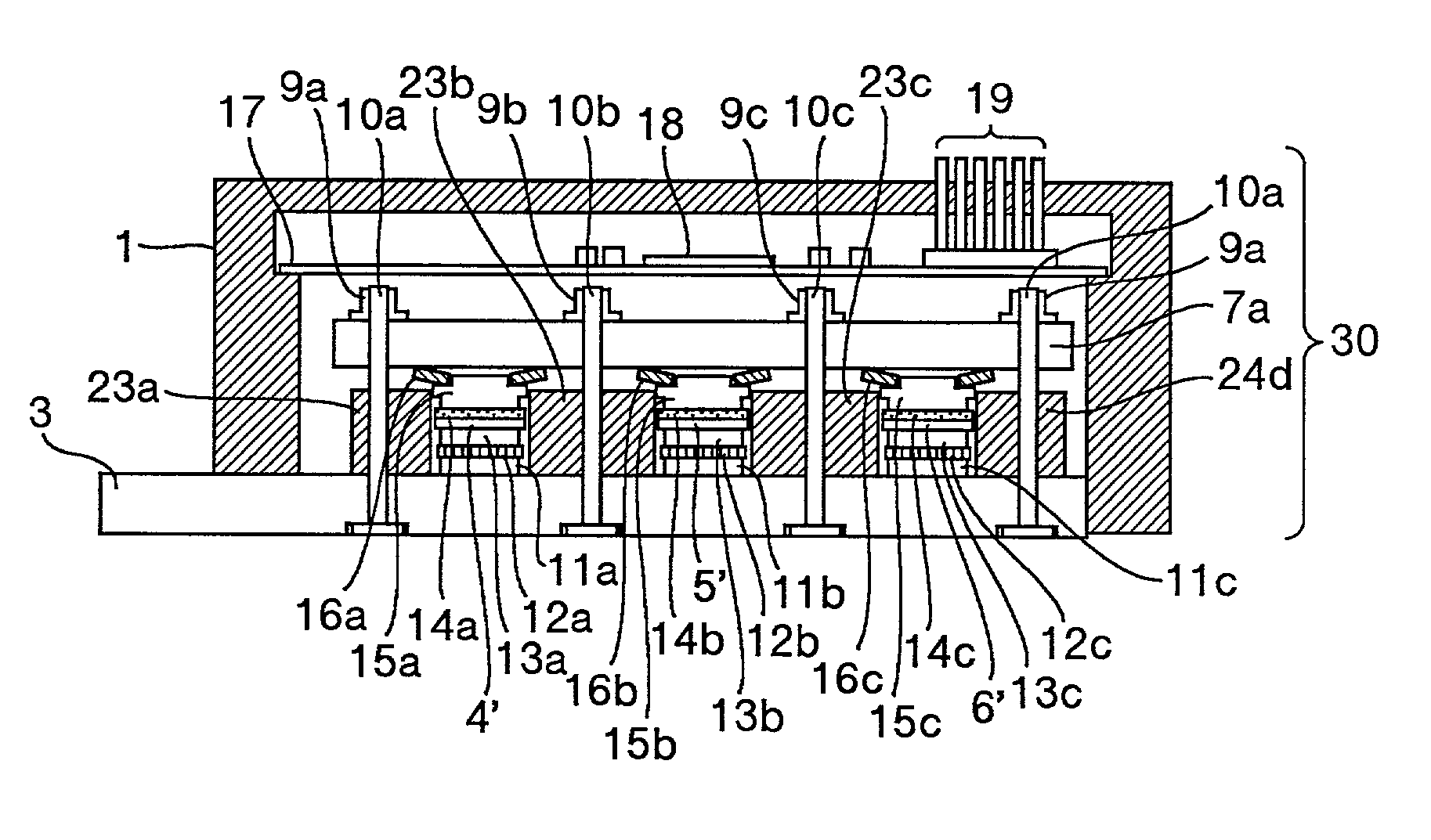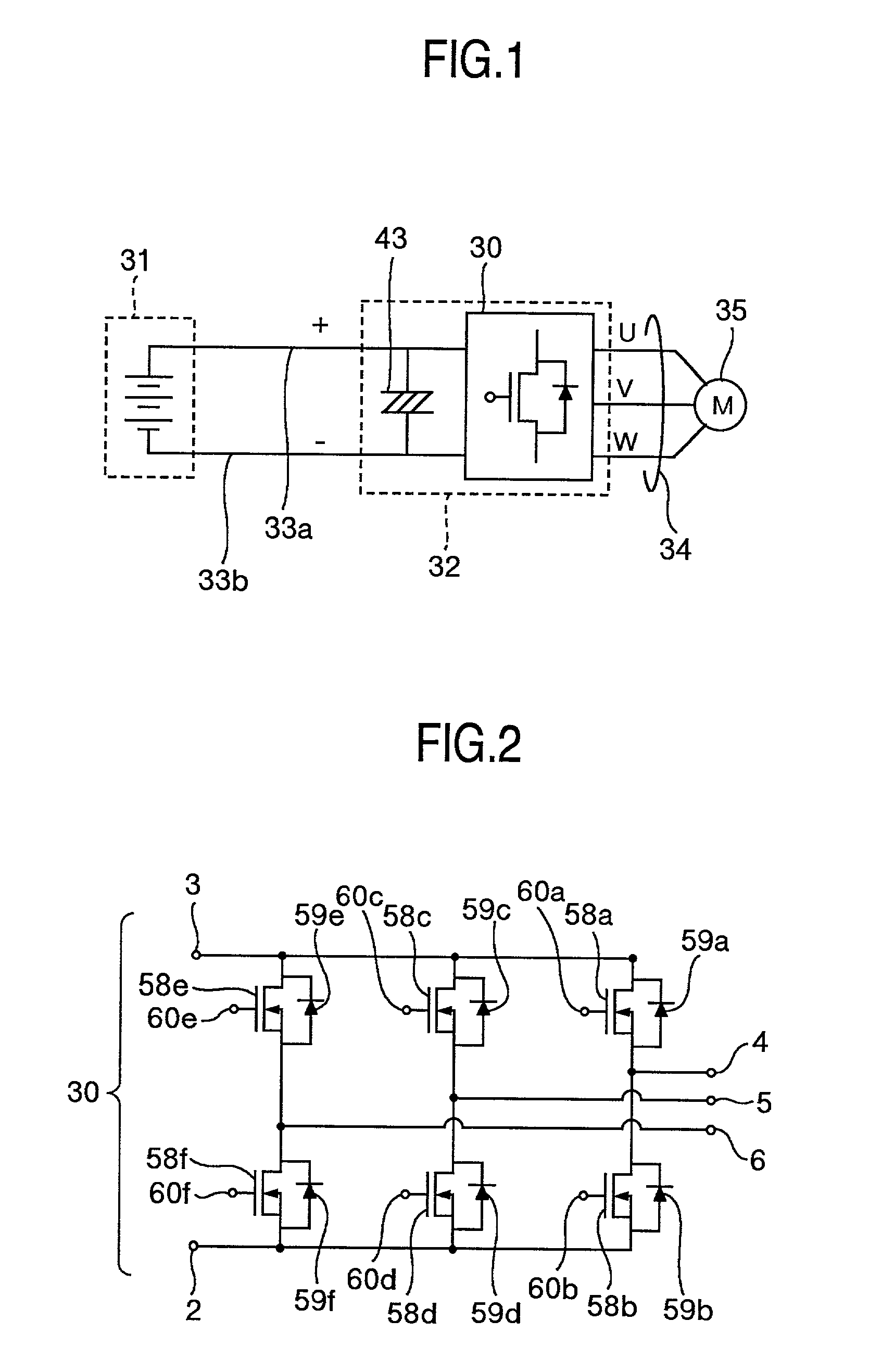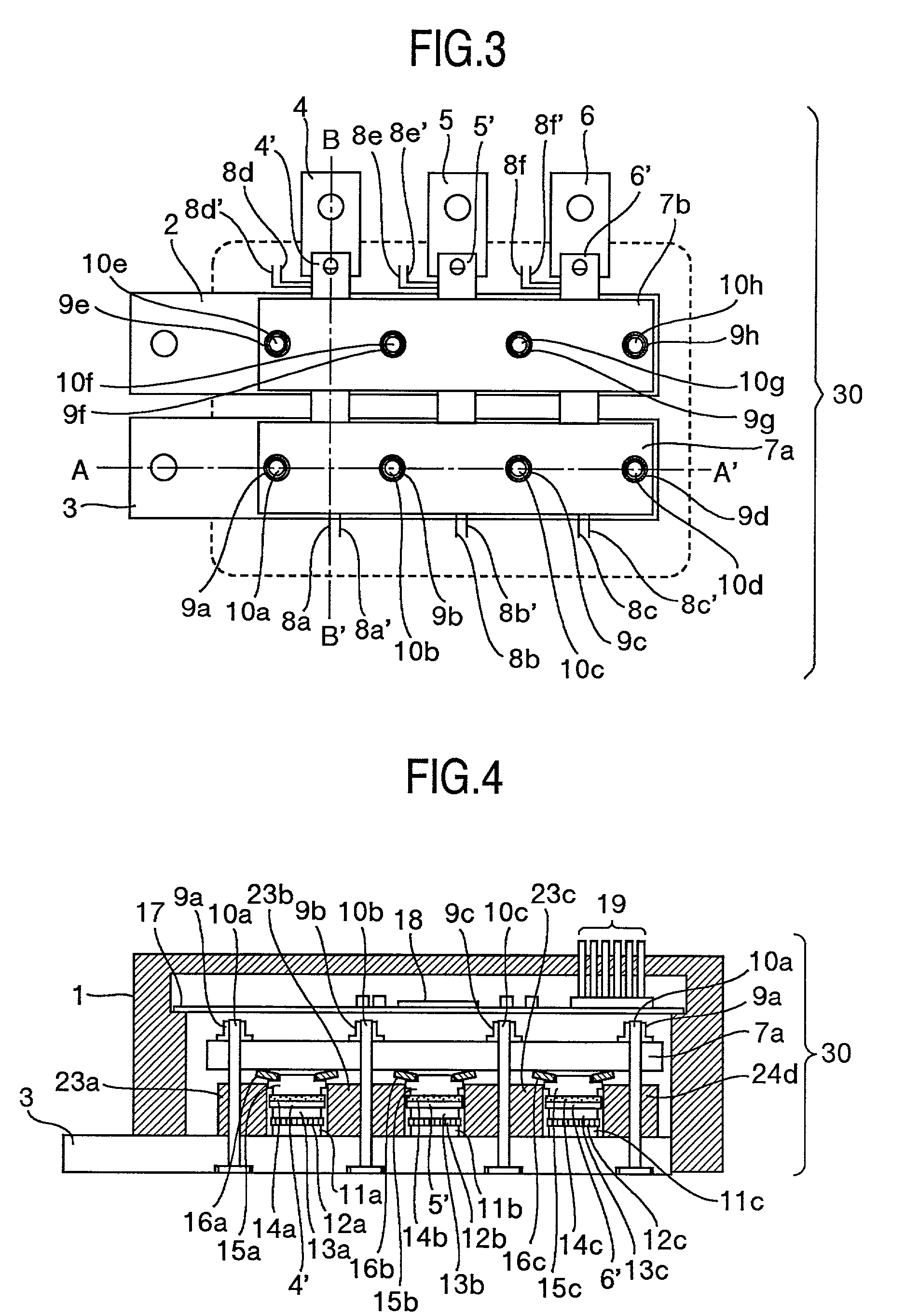Semiconductor device
a semiconductor device and semiconductor technology, applied in semiconductor devices, semiconductor/solid-state device details, power conversion systems, etc., can solve the problems of cracks, increase in the dimension of the semiconductor device, and decrease in the withstanding or breakdown voltage of the semiconductor switch
- Summary
- Abstract
- Description
- Claims
- Application Information
AI Technical Summary
Problems solved by technology
Method used
Image
Examples
first embodiment
[0045] FIGS. 3 to 5 are diagrams showing a semiconductor device in accordance with the invention, wherein FIG. 3 depicts a top view; FIG. 4 is a cross-sectional view as taken along line A-A' of FIG. 3; and, FIG. 5 is a sectional view taken along line B-B' in FIG. 3. In FIG. 3, numeral 1 designates a package housing or casing; 2 denotes a negative polarity DC wiring board or plate; 3 is a positive polarity DC wiring plate; 4, 5, 6, 4', 5' and 6' are output wiring plates; 7a-7b, pressure applying or "pressurization" plates; 8a to 8f and 8a'-8f', signal transfer lines formed of electrical leads; 9a-9f, collars; 10a-10f, bolts; 30, semiconductor device. Each DC terminal 2, 3 is provided with a through-going hole for wiring attachment to a DC power supply unit. Respective output wiring plates 4-6 are provided holes for output wiring attachment. Signal wiring leads as used herein are organized into pairs; for example, wiring leads 8a and 8a' are designed as a pair with one being connected...
second embodiment
[0062] FIGS. 6 to 8 are diagrams showing a semiconductor device in accordance with the invention, wherein FIG. 6 is a top plan view, FIG. 7 is a sectional view taken along line A-A' of FIG. 6, and FIG. 8 is a sectional view along line B-B1 of FIG. 6. In FIG. 6, reference character 1' designates a casing; 2 denotes a negative DC wiring plate; 3 is a positive DC wiring plate; 4 to 6, output wiring plates; 7a-7c, pressurization plates; 8a-8f and 8a'-8f', signal transmission lines formed of conductive wiring leads; 10a-10c, bolts; 72a-72c, nuts; 24a-c, insulators; 25, printed wiring plate; 30, semiconductor device. Each wiring plate 2, 3 is provided with openings or holes for lead attachment to the DC power supply. Each output wiring plate 4, 5, 6 has a hole for output lead attachment. The signal leads are organized into pairs; for example, leads 8a and 8a' are paired for connection to the gate electrode and source electrode of a MOSFET for use as one semiconductor switch.
[0063] In FIG....
third embodiment
[0069] FIGS. 9 and 10 are diagrams showing a semiconductor device in accordance with the invention, wherein FIG. 9 is a top plan view, and FIG. 10 is a sectional view taken along line A-A' of FIG. 9. In FIG. 9, reference character 1' designates a casing; 2 and 2a-2c denote negative DC wiring plates; 3 is a positive DC wiring plate; 4-6 and 4'-6', output wiring plates; 7a-7f, pressurization plates; 8a-8f and 8a'-8f', signal transmission lines formed of wiring leads; 10a-10k and 10m-10n, bolts; 72a-72k and 72m-n, nuts; 22a-f, screws; 30, semiconductor device. Each wiring plate 2, 3 is provided with more than one hole for lead attachment to the DC power supply. Output terminals of the wiring plates 4-6 are provided with holes for output lead attachment. The signal leads are organized into pairs; for example, leads 8a and 8a' are paired for connection to the gate electrode and source electrode of a MOSFET for use as one semiconductor switch.
[0070] In FIG. 10, 1 indicates the casing; 2, ...
PUM
 Login to View More
Login to View More Abstract
Description
Claims
Application Information
 Login to View More
Login to View More - R&D
- Intellectual Property
- Life Sciences
- Materials
- Tech Scout
- Unparalleled Data Quality
- Higher Quality Content
- 60% Fewer Hallucinations
Browse by: Latest US Patents, China's latest patents, Technical Efficacy Thesaurus, Application Domain, Technology Topic, Popular Technical Reports.
© 2025 PatSnap. All rights reserved.Legal|Privacy policy|Modern Slavery Act Transparency Statement|Sitemap|About US| Contact US: help@patsnap.com



